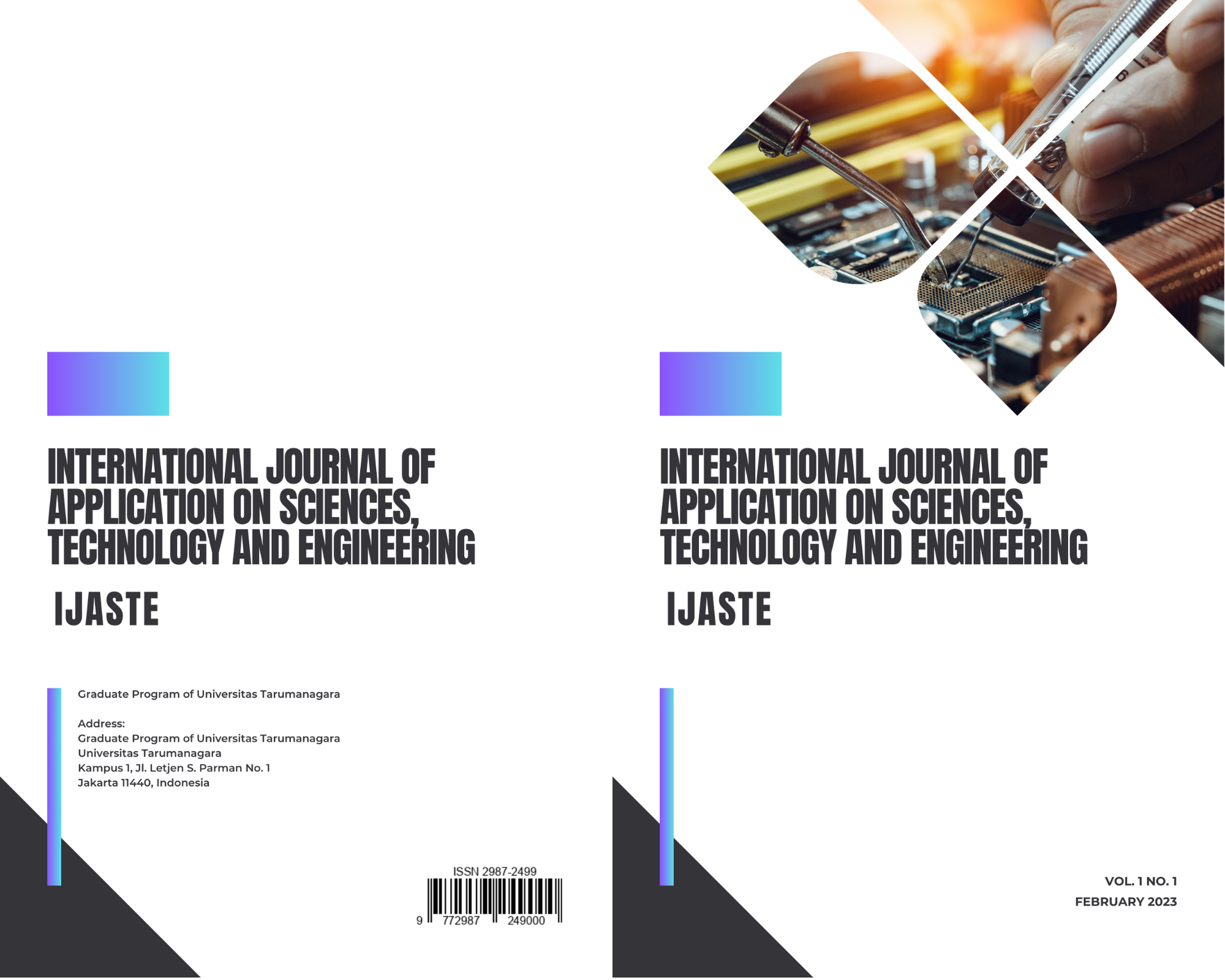Developing Website-Based Information System Applications to Map PT. XYZ’s Properties Using Next.JS Framework with Haversine Method
Main Article Content
Abstract
The presence of technology in society fosters rapid innovation in the industrial sector. Information Systems in the property industry is necessary for the development of marketing and sales. The customer's attitude towards the Website Application is determined by the perceived benefits, trust and customer satisfaction with the Website which helps users to obtain information about the current property of the XYZ company and trust PT. XYZ to make predictions using location calculations with the Haversine Calculation method. Through this prediction, it is hoped that we discover the University’s closest location to the PT. XYZ property. Application specially designed to make it easier for PT. XYZ customers in server-side rendering is very useful when loading single page applications because it results in a better user experience with Next Js. This application utilizes the Geographic Information System feature supported by Google Maps equipped with a geolocation feature that can pinpoint a location based on latitude and longitude, as well as using the Haversine Formula technique in a web application which is useful for users.
Article Details

This work is licensed under a Creative Commons Attribution-NonCommercial-ShareAlike 4.0 International License.
References
E. S. Soegoto, “Information System Design of an Inventory Online Website”, in Jurnal Internasional Bereputasi, 2018
P. M. A. Paul, “Spatial progression of estate property management system”, in Bharati Vidyapeeth’s Institute of Computer Applications and Management 2018, 2018.
B. Griessner, “The Impact of Web Design on Brand Perception An Example: The Multi-Utility Brand IKB”, in Conference Proceedings Trends in Business Communication, 2016, pp. 125-132.
B. D. Berger, “The utility of rapid application development in large-scale, complex projects”, in Information Systems Journal, 2009, 19 (6), pp. 549–570.
C. M. Coronel, “Database Systems Design, Implementation, and Management (12e)”, in Cengage Learning, 2016.
D. M. Wolfgang Kresse, “Springer Handbook of Geographic Information”, in Springer Science & Business Media, 2012.
J. T. Beng, A. F. Amanto, A. Aurelia, D. Chandra, K. Y. D. Mandey, L. A. Ramadhani, R., Stephanie, and S. Tiatri, “Designing mathematics, science, and reading competency dashboard using business intelligence algorithm” [Unpublished], in AIP Conference Proceedings, 2022.
M. H. H. R. Hatta, “Application of Haversine Formula in Education Game "Landmark Nusantara"”, in Proceedings of the 2nd Borobudur International Symposium on Science and Technology, Advances in Engineering Research, 2020. volume 203.
K. D. C. Husada, “Implementasi Haversine Formula untuk Pembuatan SIG Jarak Terdekat ke RS Rujukan COVID-19”, in Jurnal RESTI (Rekayasa Sistem Dan Teknologi Informasi), 2020, 4(5), pp. 874–883.
A. G. Phipps, “Three Applications of V.3 Google Maps: Just for Display of Data, or Analysis as Well?”, in J. Geogr. Inf. Syst., 2014. vol. 06, no. 05, pp. 548– 558.
S. C. Hirtle, “Geographical Design: Spatial Cognition and Geographical Information Science”. Synth. Lect. Human-Centered Informatics, 2019. vol. 12, no. 3, pp. i–69.
F. W. D. M. Khairina, “Pencarian Lokasi Jalur Nugraha Ekakurir (Jne) Terdekat Menggunakan Haversine Formula (Studi Kasus Kota Samarinda)”, Semin. Nas. Inov. Dan Apl. Teknol. Di In, 2017, pp. 1–5.
I. I. Atmajaya, “Sistem Informasi Pencarian Lokasi Perguruan Tinggi di Makassar”, Ilk. J. Ilm., 2018. vol. 10, no. 2, pp. 232–236.
S. N. Hussien, “Landmark based shortest path detection in alarm system”, in Al-Mustansiriyah J. Sci., 2018, vol. 29, no. 2, p. 135.
F. Lusiana and J. T. Beng, “Grouping of Tourism Objects Using Geotagged Photo with Hierarchical Clustering Method in Bantul and Sleman”, In IOP Conference Series: Materials Science and Engineering, IOP Publishing, 2020, July, Vol. 852, No. 1, p. 012166.
K. Konshin, “Next.js Quick Start Guide”, Packt Publishing, 2018.
V. G. C. Pecoraro, “Jumpstart Jamstack Development: Build and deploy modern websites and web apps using Gatsby, Netlify, and Sanity”, Packt Publishing, 2021.
L. Jiang, “A City Modeling and Simulation Platform Based on Google Map API”, Advances in Intelligent and Soft Computing] Proceedings of the 2011, International Conference on Informatics, Cybernetics, and Computer Engineering (ICCE2011), 2012.
J. Frantiska Jr., “Visualization Tools for Learning Environment Development”. SpringerBriefs in Educational Communications and Technology book series (BRIEFSECT), 2017. pp 21-30.



